We arrived in Sydney at 6:30 a.m. – 22 Hollywood hopefuls from Dodge College of Film and Media Arts, led by producer-turned-professor Harry Ufland. For the next 10 days during summer Interterm, we would immerse ourselves in the Australian entertainment industry, learning to understand, appreciate and eventually conduct business alongside the nation’s film industry. That first night, when we checked in to the Hughenden Hotel, owner Suzanne Gervay told us her lodgings would surely become our home away from home. She was right.
Our group was soon joined by Stephan Wellink, his son, David, and their collaborator, Maggie, who enthusiastically documented our journey via an independent film. In addition, we were accompanied by Pat Codon and his sons, our gracious hosts, who became inseparable from our student pack. We were welcomed by Jack Thompson (
Breaker Morant 1980
), who would remain a constant presence throughout our travels, one of many industry icons to grace our studies. We studied with Anthony Buckley, Peter Weir, Peter Fairman and David Michôd, observing and absorbing knowledge of these masters’ insights. Michôd imparted, “Movies, unlike real life, have to make sense.”
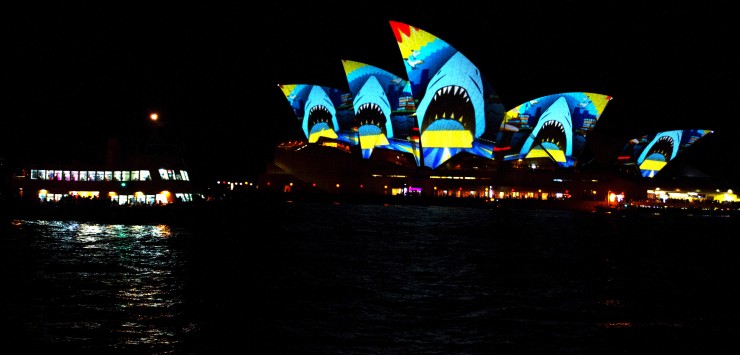
Vivid Sydney
takes over the city after dark.
We experienced
Vivid Sydney
, an elaborate laser light show that turns the Sydney Harbor into a psychedelic Disneyland, alongside the man who designed it, Ignatius Jones. Each night for a dozen nights, state-of-the-art projectors and experimental motion sensors allow buildings to dance along with spectators’ movements, transform sound waves into laser beam creatures climbing the walls, and morph the Sydney Opera House into a canvas for enormous, moving digital paintings.
As students joining an entertainment business, it was illuminating to see how events like Vivid can affect a local economy. The spectacle lured in so many people that even tiny local food trucks were at maximum demand, and the hotels, normally empty during the Australian winter months, had no vacancies. By the night’s end, I felt that being led by Ignatius Jones around his invention was like touring Willy Wonka’s chocolate factory with the candy maker himself – except with less candy and more lasers.
At Dodge, producing majors study the many international facets of the entertainment industry, and this trip gave us an intimate look into a powerful and passionate foreign market that cannot be fully realized in a classroom. I saw for myself that Australians are eager to both create and consume entertainment.
An Australian farmer, who would race me on ATVs through the mud and teach me to crack a bullwhip, lit up when I told him that I had met Peter Fairman. He shared with me how, as a young boy, his father had driven him three hours to the nearest theatre for a showing of
Crocodile Dundee
. Though he was a gruff, shark-fishing, dirt-bike-riding cattle rancher, miles away from being a cinephile, as I have come to understand the term, his beaming love of Australian film was palpable.
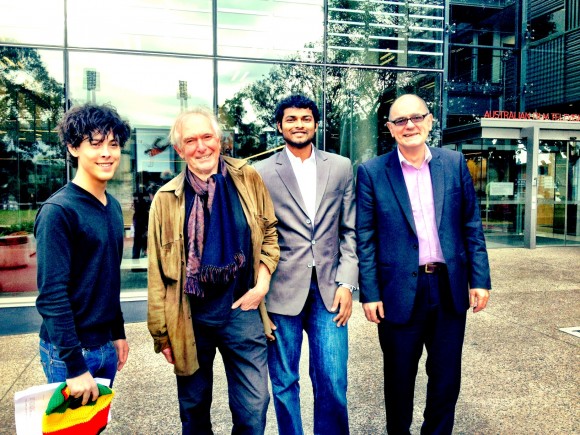
From left:
Zach Cumer ’14
, Peter Weir, Yashwanth Ravi and producer Stephan Wellink.
At the Sydney festival, I saw audiences pack into theaters and erupt into passionate discussion following each screening, only to swarm back in for more. Their display certainly rivaled that of U.S. audiences and our own love of film. I watched hundreds of thousands of people cram into the harbor for
Vivid Sydney
, each wanting to experience new forms of interactive and dazzling entertainment. Any country so full of enthusiastic content consumers is deeply worthy of American film students’ focus and investment.
Australians aren’t just ready to experience new entertainment but are tremendously able to produce it. At Screen New South Wales, CEO Maureen Barron and Director of Development and Production Megan Simpson Huberman taught us the intricacies of the “Producer Offset,” by which Australian pictures can have 40 percent of their budgets paid for by the federal government. We were shown the many online tools provided by Screen NSW, including an extensive locations database. We toured the facilities of Animal Logic, one of Australia’s finest digital effects houses, and saw firsthand how such an astounding body of visual effects work is being produced in Oz. We were given a sneak peek at their upcoming releases, and met CEO Zareh Nalbandian, who we got to question about the declining exchange rate of the Australian dollar and the closing of Rhythm & Hues.
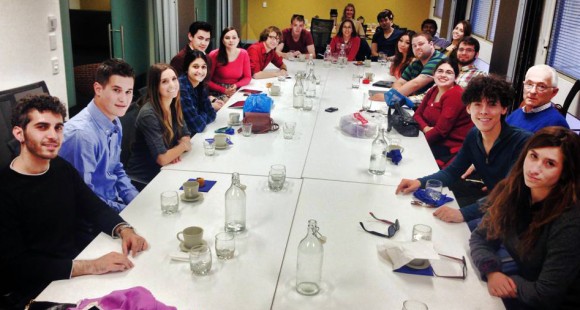
New South Wales CEO Maureen Barron and Director of Development and Production Megan Simpson Huberman taught us the intricacies of the “Producer Offset.”
Later, we attended a reading of an independent Australian film currently in development titled
I Am Jack,
produced by Stephan Wellink and David Whealy. For many of the students, this was first exposure to a real-life development process, and one member of our group was even asked to perform alongside Jack Thompson.
I Am Jack
is based on a series of novels about bullying written by Susanne Gervay, the owner of the previously mentioned Hughenden Hotel. These novels have been published internationally, and recently in the United States.
At Fox Studios, we were taken through gigantic sound stages that only a few months prior had housed
The Great Gatsby
, and on our trip’s last morning in Sydney we met with executives at Essential Media and Entertainment.
In addition to our business education, a substantial part of our journey involved fostering relationships between young Australian and American filmmakers. We spent time at the Australian Film Television and Radio School, or AFTRS, and met with eight impressive graduate writing students. We were treated to an acting class that introduced us to myriad new skills.
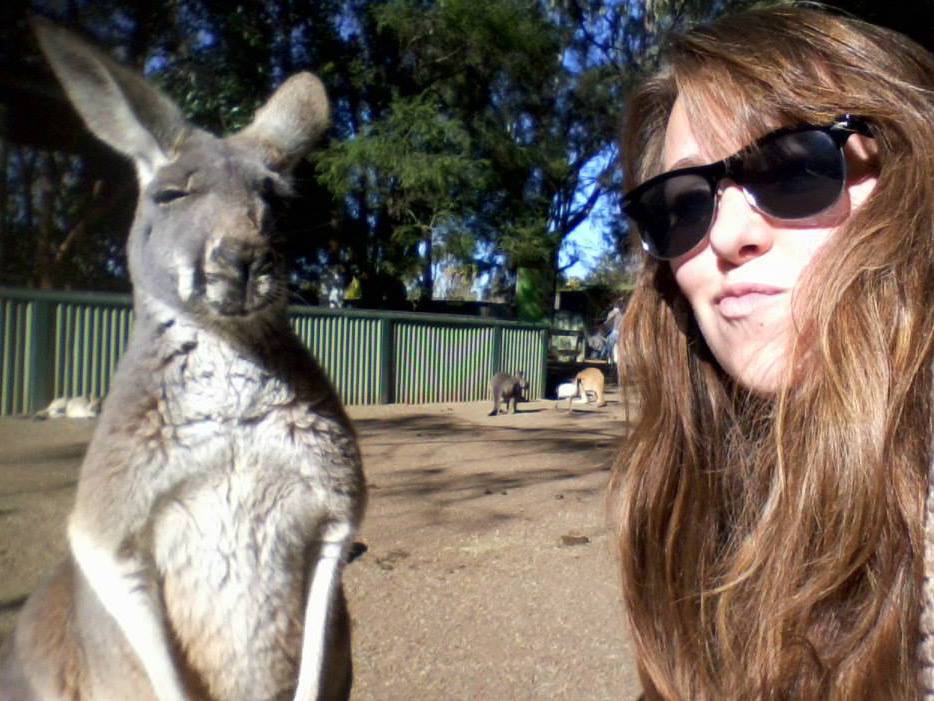
Melanie Kocher ’15 with a kangaroo at Featherdale Wildlife Park in Sydney.
Even though we were extremely busy, our group had plenty of time to explore Sydney for its own sake. We heard pipe organ symphonies in the Sydney Opera House, petted kangaroos at the zoo, hiked through the Blue Mountains and went wine tasting at Tyrell’s Wines and at McWilliams Wines in the Hunter Valley. None of the best tourist spots were left uncovered, from Manley Beach to the top of the Sydney Harbor Bridge. We even saw the guts of the world’s largest IMAX theatre after a free showing of
Star Trek Into Darkness
.
Our hosts, the Condons, provided free tickets to a rugby match at Allianz Stadium in Sydney, where we gobbled down the famous Australian meat pies and thoroughly enjoyed watching a sport new to us. We finished off with a farewell function sponsored by David Whealy, enjoying drinks and a six-piece band, and culminated our experience sharing stories with producers, writers, directors and many of those who assisted us on our tour.
Our Australian hosts worked tirelessly to make this journey special, and we offer them our deepest and most humble gratitude.
Our time in Sydney was thrilling, educational and culturally enlightening. Each of my classmates and I are focused, with great interest, on the future of this remarkable entertainment industry.
Next year, Dodge may welcome Australian students in a similar exchange program, and I hope that they enjoy a tour of my homeland as much as I enjoyed a tour of theirs. We hope the filming and editing of our entire Australian tour will not only serve as a lingering memento of our wonderful experiences in Australia but will inspire governments and educational institutions across both nations to assist in making reciprocal overseas tours for young film students from Australia, America and the entire globe.
If I were an incoming college student, I’d be fascinated to know what Dodge students are experiencing and learning in Australia. Professor Harry Ufland has brought something to Dodge that is unattainable at any other film school, and this trip serves as yet another testament to that. The industry guests that Professor Ufland brings to our school are something of Dodge legend, but this trip to Sydney shows that our education is effective at more than introducing us to big names. Dodge is aware that film is a global industry, and that learning the depths of the Hollywood system is not enough.
This is why in Dodge classrooms we do more than study the trades and textbooks. We study the world, from a communal and cultural perspective. We examine politics and art that extend beyond cinema, and we travel to France, Singapore, Australia and beyond. At Dodge, we are learning to be more than just filmmakers; we are becoming global citizens and conscious participants in an international cinematic market.
>> READ MORE:
Other Chapman students traveled to Iceland for a summer interterm class on documentary filmmaking. Read
an account by Colin Arp ’16
.
More photos from the students’ trip to Australia
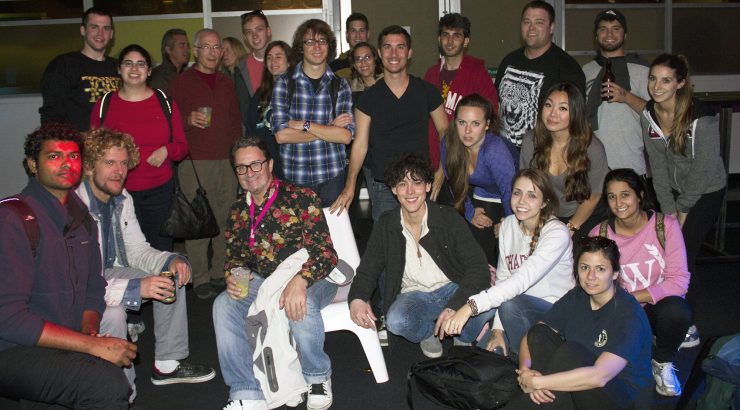

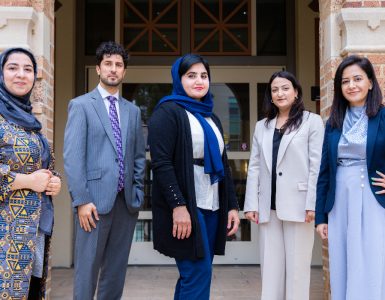
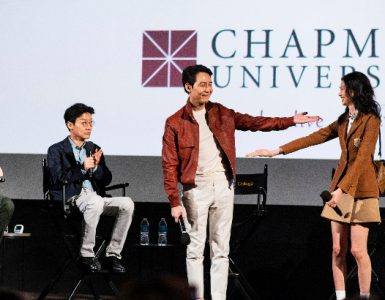

Add comment